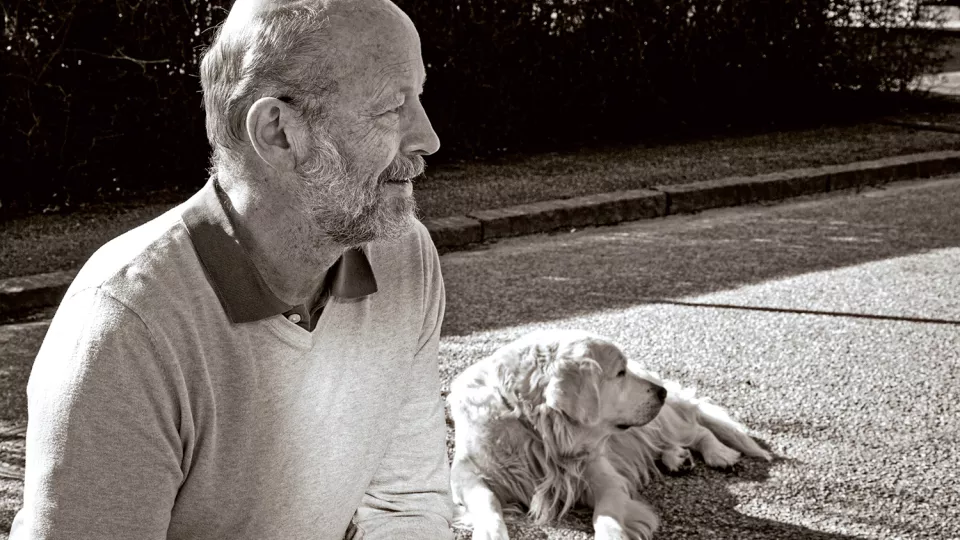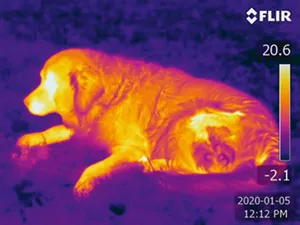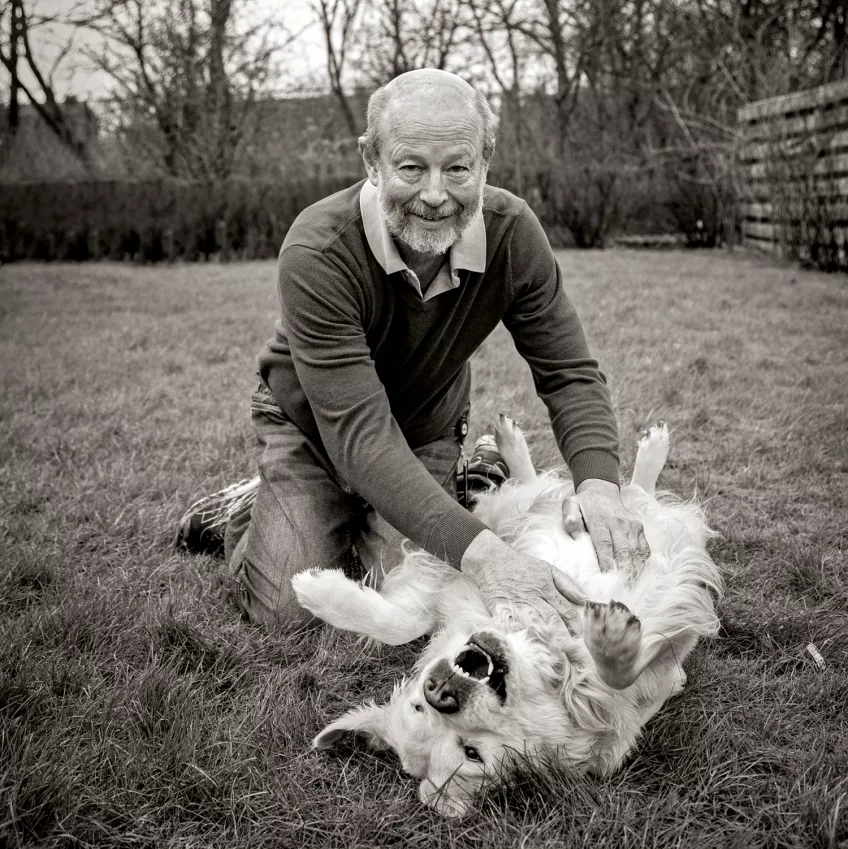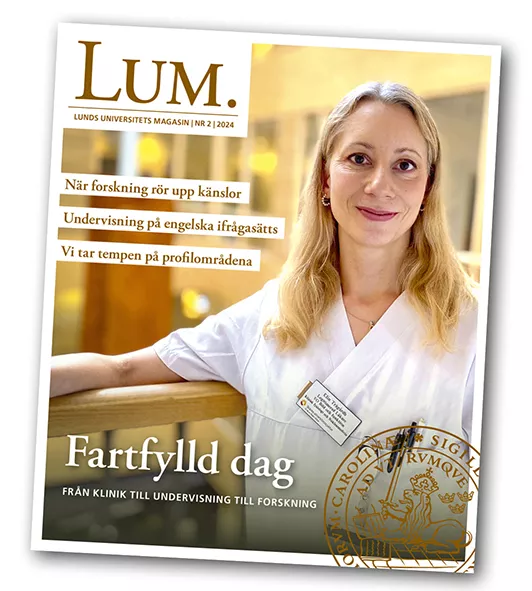It is nearly five years since the Saturday morning when Ronald Kröger woke up and thought he was getting a cold or flu. It did not stop him from participating in the clean-up day in his residential area in northern Lund. That morning, the weeds on the paths and playgrounds were going to be removed and he joined in and got to work. However, he had trouble with both his balance and speech and had to take a break quite early on and hobble home again.
“Later, a neighbour dropped by to return the coffee cups I had lent out and noticed then that something was really wrong.”
One of his daughters was summoned together with an ambulance and after a couple of hours, the stroke in the right-hand side of the brain stem was confirmed.
He remembers the time immediately after the stroke as a jumble of different forms needing to be filled in, testing of recovery aids and other practical things that took most of the rest of the precious concentration he so needed to save his research. However, while he only had short periods of sustained concentration, the physical recovery went quickly at the beginning. His speech came back, the paralysis in one arm and leg ceased and he was sure it would take a maximum of a couple of months before he would be out running again.
“I still cannot do that – and probably never will”, he says and explains that what has not resolved itself after five years is often permanent. In his case, it is his left leg that drags behind him.
After the first intensive weeks, came a long recovery. It took time to regain the skills and functions – and not least, the energy that Ronald Kröger needs for his active research.
“Doctors call it mental fatigue and, in a situation like that, you are entirely dependent on talented colleagues who can go in and cover for you. I had two in particular who saved one of my projects.”
Research funders do not take illness into account
Things did not go so well with another project. There were constant delays in testing and experiments and delays in publications that made it difficult for Ronald Kröger to obtain new grants.
“Research funders do not take illness into account. You have to work the whole time to obtain money for continued research. It is hard. And as a researcher, you live for your research.”
Ronald Kröger says that, as a biologist, he is particularly aware that life ends and he wants to have time to discover and explain as much as he can before this happens.
“My research results are also important for the students I teach and the doctoral students who have started working for me. It would be amazing if I was given the opportunity to complete the projects that are so close to a solution.”
From whales eyes to dogs noses
However, Ronald Kröger has been involved in discovering and explaining quite a lot in his extensive research life. For example, in explaining why whales see just as well in the air as they do in water. Or, in explaining why fish see colours when they really should not be able to. These are discoveries that play a role in optical research and are interesting for the development of the camera lens.
“Not least in space research and also when they are drilling and want to investigate what it looks like in the boreholes.”
At the beginning of the 2000s, Ronald Kröger was also awarded an important prize for his advanced form of optic research on animal eyes, so-called optoelectronics. It was the British Rank Prize of more than half a million SEK, awarded by the Rank Prize Funds, established by the English Baron Rank.
Over the past decade, Ronald Kröger’s research has largely focused on dog noses. One found close by belongs to Kevin, a golden retriever who is seldom far from his master. Kevin has been with the Kröger family for twelve years and one morning when he greeted his master nudging him with his cold nose, Ronald Kröger had the idea that led to a change in the direction of his research.
“Could it be that the dog nose is cold in order to detect heat?” He wanted to find out.
Important finding
In 2012, he started the Mammalian Rhinarium Group at the Department of Biology and there are several lines of research within the group. Among other things, the group continued work on the phenomenon of how dogs feel and resists significantly lower temperatures than we do as humans. How the dog’s sensitive nose can detect heat. An important aid in the research work is the thermal camera that measures the temperature of the surface of the skin from a distance. Ronald Kröger also has an inbuilt thermal camera in his mobile as well as many images that show where Kevin’s body is warm and cold (see photo). He enjoys giving lectures on his research at schools and libraries and showing images. Kevin is usually with him and the meetings with people outside the academic world are positive.
“You also learn how to express yourself so that people understand. Not least when you talk to children”, he says.
Now Ronald Kröger hopes to find some undisturbed time to complete the research he was in the middle of when he suffered the stroke. He is hopeful, he says, because an important publication is finally underway and he hopes it is not too late. One problem he is keen to solve is South America’s major problem with vampire bats. When they bite people and livestock, they can transmit deadly diseases, such as rabies. Above all, it is the less well-off indigenous populations who suffer time and again.
“Now all species of bat are being killed in South America which is not good because it can lead to the extinction of species.”
He explains that the vampire bats have a similar sense to dogs but it is still unknown if they can detect warm bodies on the ground from the air.
“If they can, it might be possible to lure the vampire bats into traps”, he says. “There is important research to be done here with parallels to the dog’s nose.”
Another exciting observation is that the dog’s nose seems to have a kind of colour perception so that a dog can distinguish between heat radiation from different materials. The research field is completely new and Ronald Kröger believes there is a lot to be learnt.
Stroke patients with dogs more likely to survive
Six months after the stroke, he took part in another dog finding – some distance from his research area but close to his research heart.
“It has been shown that stroke patients who have a dog have a twenty per cent higher rate of survival after one year than those who do not own a dog. Kevin has helped me with a lot of other things as well. For example, he forces me to take the breaks I need because I have to take him for walks.”
The walks around northern Lund are likely to continue despite things looking critical a couple of weeks ago. Kevin was drooping and had to go to the vet.
“But thankfully he is much better now”, says Ronald Kröger, patting his friend and, at times, research partner and research subject.





